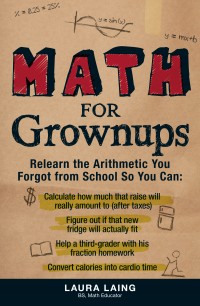Mind mapping technology for financial advisors
Technology can boost your effectiveness when you use mind mapping with your clients.
Using a digital pen in client meetings will spare you the inefficiencies of an old-fashioned pen or pencil as well as the awkwardness of  struggling with complex mapping software in front of your client. After the meeting, using software to make your map more attractive and to manipulate the data will make you more effective with your clients. I recently learned how Jaime Bordelon, executive assistant for an investment advisor, uses a digital pen, in addition to MindJet and SmartDraw software, to capture and share information collected in client meetings.
struggling with complex mapping software in front of your client. After the meeting, using software to make your map more attractive and to manipulate the data will make you more effective with your clients. I recently learned how Jaime Bordelon, executive assistant for an investment advisor, uses a digital pen, in addition to MindJet and SmartDraw software, to capture and share information collected in client meetings.
Five-step process for your client meeting
Here’s the five-step process Jaime suggests for your client meeting.
1. Take your digital pen to your client meeting, along with an appropriate template. Jaime’s firm has templates for topics such as new client, prospect, center of influence (financial advisorspeak for referral source), re-discovery meeting, asset allocation, next phase, and retirement distribution.
2. Begin a general conversation and map it using your digital pen. Expand into more details.
3. After the meeting, you and the client sign the map to show that both of you agree on the information.
4. Dock your pen to save the data on your computer.
5. Give the client the original copy of the map. It’s satisfying for the client to get something to take away.
By the way, Bordelon uses an Okidata MC560 Plus Digital Two-Pen Solution purchased from Futureware in Omaha. It appears have been discontinued. But there are other digital pens out there and you may find the Okidata model left in stock somewhere.
Mapping’s prospecting potential
“What’s really interesting is what happens after the client takes the map home,” says Bordelon. Mind maps are conversation starters in a way that plain text documents are not.
Sometimes clients leave their maps out in plain sight. Then, a friend sees and asks about it. Before you know it, you’ve got a referral. In many cases, these are referrals of persons whom your clients wouldn’t have suggested on their own initiative.
Another benefit: your clients often think of more information to add when they review the map later. This is especially true when they show it to the spouse, significant other, children, or friends.
Using MindJet or SmartDraw after the meeting
After your meeting, you or your assistant can clean up your map and make it more attractive by inputting the information into MindJet or SmartDraw. You can also color-code sections to make the information easier to understand at a glance.
The resulting map isn’t just pretty and digital. Using the software, “You can expand and collapse the ‘octopus’ it creates,” says Bordelon. “This way you can control the conversation and avoid overwhelming your clients with details” in subsequent client meetings. It’s also easy to update the map in future meetings.
What are you waiting for? Give it a try!
P.S. The beauty of LinkedIn
I owe LinkedIn as well as Jaime Bordelon for this blog post. I didn’t know her when she responded enthusiastically to a mind mapping question I posted on LinkedIn. LinkedIn can be an amazing resource for meeting new people.











